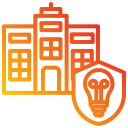Building the Future: Robotics and Automation in Construction


The Robotic Jobsite: What Is Changing and Why It Matters
Automation introduces consistency where fatigue and weather once dictated pace. Robotic total stations, autonomous layout, and automated equipment transform tedious tasks into repeatable routines, freeing crews to focus on higher-value work that demands human judgment, coordination, and creativity.
The Robotic Jobsite: What Is Changing and Why It Matters
Aerial drones create up-to-date site maps, while quadruped robots patrol interiors after hours, capturing progress and identifying hazards. The real advantage is not just the gadgetry, but the continuous stream of usable data that helps teams make decisions earlier and with confidence.
Clean Models, Clear Outcomes
Well-structured models with consistent naming, tolerances, and constructability logic translate more reliably into robotic workflows. Streamlined coordination prevents field rework and gives robots accurate, unambiguous geometry to follow without constant manual intervention by busy site teams.
Open Standards, Fewer Roadblocks
Interoperability matters. Open formats and disciplined data exchanges minimize translation errors between authoring tools, layout robots, and scanners. When every stakeholder can trust the data, automation scales beyond isolated pilots and becomes a standard practice rather than a novelty.
Feedback Loops: Scans That Improve the Model
Reality capture closes the loop. As-built scans validate placement, reveal clashes, and update models with ground truth. The result is a living dataset that continually tunes instructions for robotic systems, boosting accuracy and compressing inspection-to-correction cycles significantly.

Safety, Ethics, and Trust: Automating with Care
01
Human-in-the-Loop for Critical Tasks
Autonomy is powerful, yet construction thrives on situational awareness. Supervisory control, clear handoff points, and stop mechanisms ensure workers retain authority when conditions change, preventing unsafe outcomes and keeping accountability with the people who understand the site best.
02
Privacy and Transparency on Site
Cameras and sensors collect valuable data, but they also raise questions. A transparent policy on what is captured, who can access it, and how long it is stored helps teams feel respected and fosters a healthier culture around digitization and automated monitoring.
03
Ethical Procurement and Long-Term Impact
Selecting a robot is more than a purchase; it is a commitment to training, maintenance, and cultural change. Evaluate suppliers for support, upgradability, and safety posture to ensure that automation enhances livelihoods and project outcomes over the full lifecycle.


People and Skills: Preparing the Workforce for Robotic Collaboration
Operators, foremen, and craft professionals can become robot wranglers, data interpreters, and workflow designers. Short, hands-on training aligned with real tasks helps crews adopt tools rapidly and confidently, turning early skepticism into pride in measurable improvements.
People and Skills: Preparing the Workforce for Robotic Collaboration
Titles may change—robot technician, reality capture lead, automation coordinator—but the mission stays the same: build safely, on time, and on budget. Emphasizing continuity of purpose eases transitions and anchors new technology to longstanding construction values.
Field-Proven Stories: What Projects Taught Us
A routine flight over an earthwork site revealed subtle drainage issues before rain turned them into delays. The team rerouted equipment, stabilized a slope, and avoided rework by acting on data captured in minutes, not days of surveying.
Sustainability by Default: Automation for Leaner, Greener Builds
Automated cutting, layout, and placement help teams use exactly what the design calls for—no more, no less. Over a project’s lifecycle, these small improvements add up to meaningful savings in materials, transport, and disposal costs.
Sustainability by Default: Automation for Leaner, Greener Builds
Electric robots, optimized routes for autonomous equipment, and data-driven scheduling trim idle time and fuel burn. Even minor operational tweaks, sustained over months, can lower emissions without compromising productivity or the pace of critical path activities.


Getting Started: Pilots, ROI, and Scaling What Works
Choose a task with repetitive steps, measurable outcomes, and supportive stakeholders. Define success criteria, assign ownership, and run for a set duration. Tight scope and disciplined documentation will reveal both value and limitations without excessive risk.

